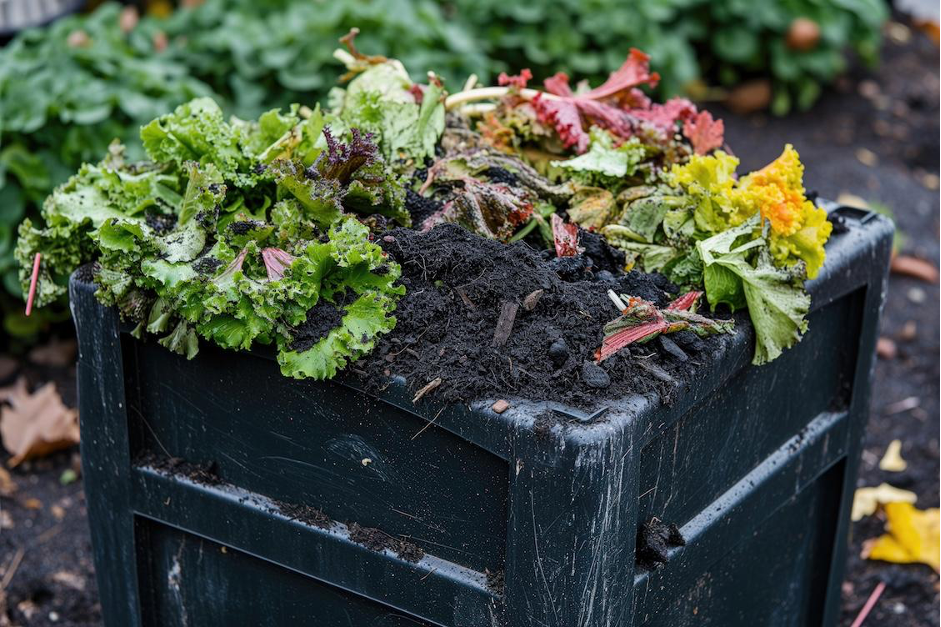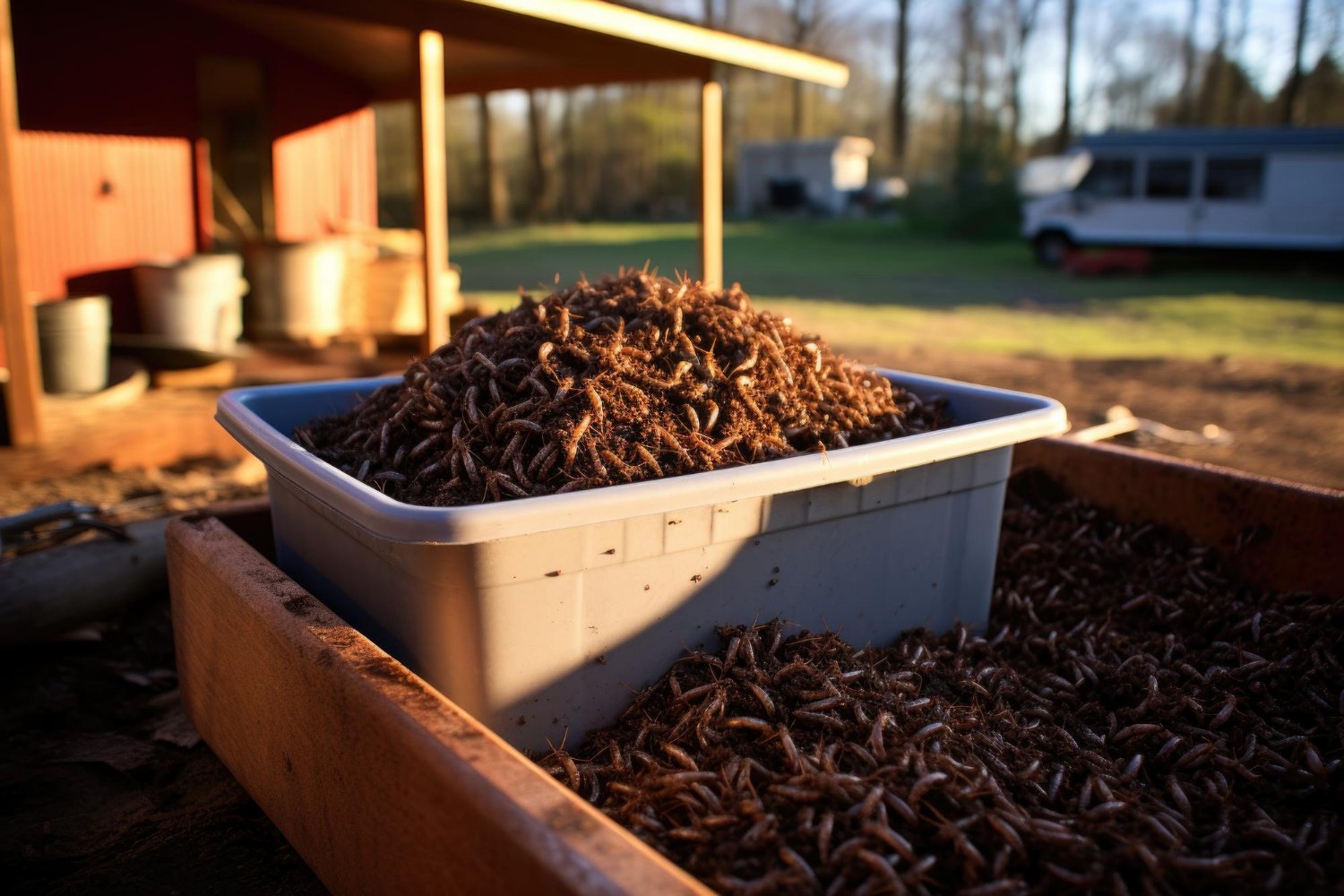So, you’ve set up your worm bin or are considering doing so, and you find yourself pondering the classic question: “How many composting worms do I need for my worm farm?”
You’re not alone in this problem! Determining the correct number of worms can be as tricky as figuring out the perfect recipe for your favorite dish – it might take a bit of trial and error, but we’re here to help you crack the code.
As you might know, my family and I have been tending to our vermicomposting haven for 40 years. When it comes to anything related to our wiggly friends, we’ve got the lowdown.
Without further ado, let’s go ahead and solve this dilemma!
Adding Worms to Your Composting Bin
One crucial factor is the size of your bin. If you’ve got a compact worm bin or a smaller container, you won’t require an army of red worms. In fact, a few hundred of these wrigglers will do the trick. However, if your worm bin is more spacious and hungrier for food scraps, you may want to amp up your worm squad. 
When it comes to stocking your bin, we’re talking about a range of 1/2 to 1 1/2 pounds per square foot. We recommend keeping it below 2 pounds – we don’t want to squeeze too many guests into a cozy party.
Calculating your bin’s square footage is as easy as pie. For square or rectangular containers, multiply the width and length (in inches) and divide by 144.
What about circular bins? Square the radius, multiply by pi (3.14), and divide by 144! Once you’ve figured out that surface area, you can determine your stocking density using these handy rules of thumb.
Play It Safe, Start Slow
If you’re a rookie worm wrangler starting fresh, we say play it safe and aim for 1/2 pound per square foot. Worms, like finicky guests at a party, might decide to make a hasty exit if they’re not feeling the space. Plus, you don’t wanna waste your money if you’re just starting out, which is why I recommend that beginners kickstart their worm bin adventure with this amount.
When to Up the Number of Worms in Your Bin?
If you’re confident your bin will be worm-friendly from the get-go, consider stocking at 1 pound per square foot. Benefits? Your bin’s waste-crunching capacity goes up, and worms are more likely to start mating. Now, for the vermicomposting masters out there – those who’ve got the worm-wrangling skills – you can max out your bin with 2 pounds per square foot.
Just remember, worms are clever self-regulators; they’ll stop the romance if space gets tight. This is four times denser than what we’d recommend for beginners, but it pushes your bin’s processing limits to the max.
Factors That Affect the Number of Worms You Should Get
Now, let’s peek into the factors that could nudge your decision on the worm count you should aim for.
1. Temperature Matters
Consider the climate in your area. Red worms are quite particular about their living conditions. They prefer temperatures between 55 and 77 degrees Fahrenheit. If you’re in a colder region, you might need more worms to keep them warm and cozy. Conversely, in hotter climes, fewer worms may be required as they can’t handle scorching temperatures.
2. Your Location
Warmer climates tend to speed up food decomposition due to higher temperatures and humidity levels. In such cases, fewer red worms might be needed since they can process organic matter faster, producing more red wiggler worms and baby worms.
3. Moisture Levels
For your worm bin to thrive, you need to keep it moist but not soaking wet. Red worms need a bit of moisture to help break down food particles and create nutrient-rich worm castings. If moisture control is a challenge, adding more red worms can assist in maintaining the ideal moisture balance. Additionally, adding organic waste can generate moisture without resorting to watering. And here’s a bonus tip: placing shredded cardboard on top can help keep fruit flies at bay.
4. Oxygen Levels
Red worms are like us; they need oxygen to survive. If your worm bin lacks proper aeration, your worms might be gasping for air. Adding more red worms can boost their activity, which, in turn, increases oxygen levels within your bin.
5. Your Composting Habits and Location
Your personal composting habits and where you call home play a vital role in the worm count equation. If you frequently add large quantities of food scraps, you may warrant a larger worm workforce to handle the load. On the flip side, if your composting habits are more relaxed or you don’t generate hefty food scraps, fewer worms should suffice.
Don’t Forget About the Food
Not all foods are created equal in the eyes of your red worms. While fruits and vegetables vanish quickly from the menu, they may not provide the long-term sustenance your worms need. On the other hand, nutrient-dense items like eggshells and coffee grounds are like gourmet treats for your red worms. The key is to offer a variety of food scraps, with an emphasis on the nutrient-rich ones. This ensures your wormy pals get the nutrition they need to thrive in their new home.
Final Thoughts: Embrace the Wormy World of Composting!
So there you have it! We tackled the worm quantity conundrum for your compost bin.
 By harnessing the power of these little wrigglers and their nutrient-rich waste, you’re not only reducing waste but also cultivating a lush, thriving garden. It’s a win-win for your plants and your gardening goals.
By harnessing the power of these little wrigglers and their nutrient-rich waste, you’re not only reducing waste but also cultivating a lush, thriving garden. It’s a win-win for your plants and your gardening goals.
Whether you’re a beginner cautiously dipping your toes into vermiculture or a seasoned composting ninja, remember that the world of worms is a fascinating one. With these tips in your gardening toolbox, your wormy companions will be set for success in their new home!
More on Your Mind?
Check out this FAQ section for some more info related to composting worms.
1. How often should I check on my composting worms?
It’s a good practice to check on your worms regularly, about once a week, to ensure the bin’s conditions are suitable. You can monitor moisture levels, food availability, and overall worm health during these inspections.
2. Can I use any type of container for worm composting?
While you can use various containers, it’s best to choose one specifically designed for worm composting, as they provide adequate ventilation and drainage. However, you can repurpose items like plastic bins or wooden crates with proper modifications.
3. What should I do if I notice an unpleasant odor coming from my worm bin?
Foul odors usually indicate overfeeding or excessive moisture. To address this issue, stop adding food temporarily, allow the bin to dry out a bit, and ensure proper aeration. Once the odor subsides, gradually reintroduce food scraps in moderation.
4. Can I use newspaper or cardboard as bedding for my worm bin, and how often should I replace it?
Yes, you can use newspaper or cardboard as bedding material. It provides a comfortable environment for your worms. You should replace the bedding every few months or as needed when it starts breaking down, becomes too compacted, or if moisture control becomes challenging.
5. Are there any common pests or issues I should watch out for in my worm bin?
Yes, some common issues include fruit flies, ants, and mites. To prevent these pests, maintain proper moisture levels, avoid overfeeding, and cover your food scraps with bedding. If pests become a problem, you can use natural remedies like diatomaceous earth or nematodes to control them without harming your worms.









10 thoughts on “How Many Worms Do I Need for My Composting Bin?”
I really just wanted to thank you. Because of your information and basically tutoring us, I have a great new hobby, gardening. Our garden was never as healthy looking as it is today.
Last spring I ordered 5000 or so worms, followed your advice, and viola’s.
Thanks
I just had quick question. We live in the Tampa area, weather’s good, soil? Eh. Sand down below at less than 6 inches. Question. How deep does the soil need to be before hitting sand?
Hello Ally;
The worms will need about 6 to 8 inches of soil to burrow. The nightcrawlers about 10 inches of depth minimum. You can mix the ammended soil with some of the native sand to help them get acclimated. The worms cannot live in straight sand and will need to be kept moist all of the time or they will die off. You can look up soil amendments for worms to give the worms the best home possible.
Uncle Jim’s Worm Farm
Thanks Uncle Jim, I have just about 6 inches of good soil, and the colony is spreading. But I think I’ll add another inch or so. Btw, while I have your attention, is dog urine harmful to red wigglers? Should I dilute it with water?
Uncle Jim, maybe you missed it but I was asking if red wigglers can be harmed by dog urine?
Hello Ally;
Yes, their skin is very sensitive and urine contains ammonia’s and salts, both will irritate and possibly kill the worms off.
Uncle Jim’s Worm Farm
Is fl to hot to grow red wigglers in plastic totes I have a 10 gallon tote is that ok for 1000 worms
Hi Ken,
You can most definitely raise worms in Florida! You will just want to keep your bins in the shade and monitor them so the inside does not get above 80F. The 10 gallon tote will be just fine to add 1, 000 of the composting worms. Just make sure you have proper drainage and airflow.
Uncle Jim’s Worm Farm
I am from Namibia, must I wash horse manure before I use it in my worm farm and how many times must I wash it?
Can I use these in my 12 in deep garden bed in phoenix Arizona?